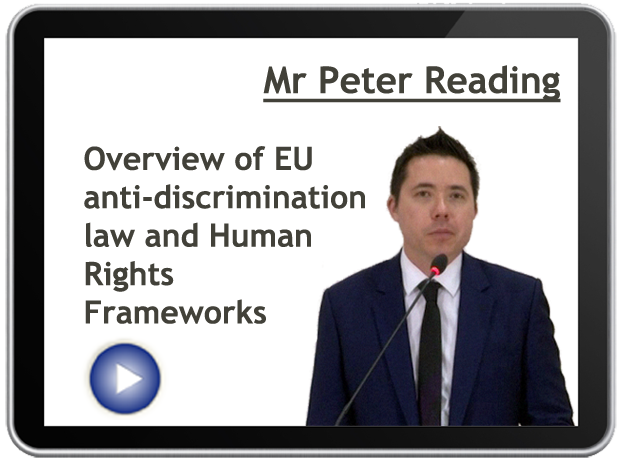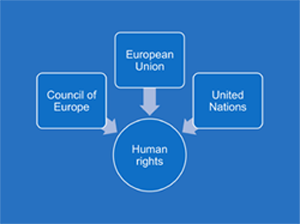Module 1:
Overview of EU anti-discrimination law and human rights frameworks
The promotion of equality and respect for human rights is now a core element of the European Union’s goals, legislation and institutions. The principle of equality has been an element of its foundations from its early days, and first developed in the context of gender equality. The Treaty of Rome of 1957 required equal pay between men and women, and provided the competence to develop the first Equality Directives: the Equal Pay Directive of 1975 and the Equal Treatment Directive of 1976, which prohibited discrimination on grounds of gender in access to employment, vocational training and promotion, and working conditions.
Yet it was not until the Treaty of Amsterdam of 1997 that the European Union introduced a specific power to combat discrimination on a wide range of grounds of sex, racial or ethnic origin, religion or belief, disability, age or sexual orientation. This power was set out in Article 13 of the Treaty of the European Community and had a significant impact. It led both to the introduction of a series of new Equality Directives as well as to the revision of the existing Gender Equality Directives.
In recent years there have also been two other major developments relating to the development of anti-discrimination law in the EU. Firstly, the powers and functions of the EU relating to equality and other human rights were recently amended and enhanced by the ratification of the Lisbon Treaty which entered into force on 1 December 2009 and made significant changes to the constitutional framework of the EU. Secondly, as a result of the Lisbon Treaty and other key decisions by the EU institutions, there is a growing convergence between the EU human rights frameworks and other intergovernmental human rights frameworks of the Council of Europe and the United Nations.
In order to fully understand and apply the developing EU anti-discrimination law it is necessary also to understand the place of equality as a human right, and how the EU, Council of Europe and United Nations human rights frameworks are increasingly interacting with each other.
This module analyses three topics:
- the development and key aspects of the Anti-Discrimination Directives;
- the enhanced place of equality and other human rights in the EU since the Lisbon Treaty;
- the relationship between the EU system of anti-discrimination and human rights law with the Council of Europe and United Nations human rights systems.
It should be noted that this e-learning course focuses on the grounds of race, sexual orientation, religion or belief, age and disability. It does not place particular focus on EU gender anti-discrimination law, although there is some discussion where appropriate. Further background information relating to EU gender Equality law is available here.
An overview of the issues raised in this module is provided by Mr Peter Reading:

